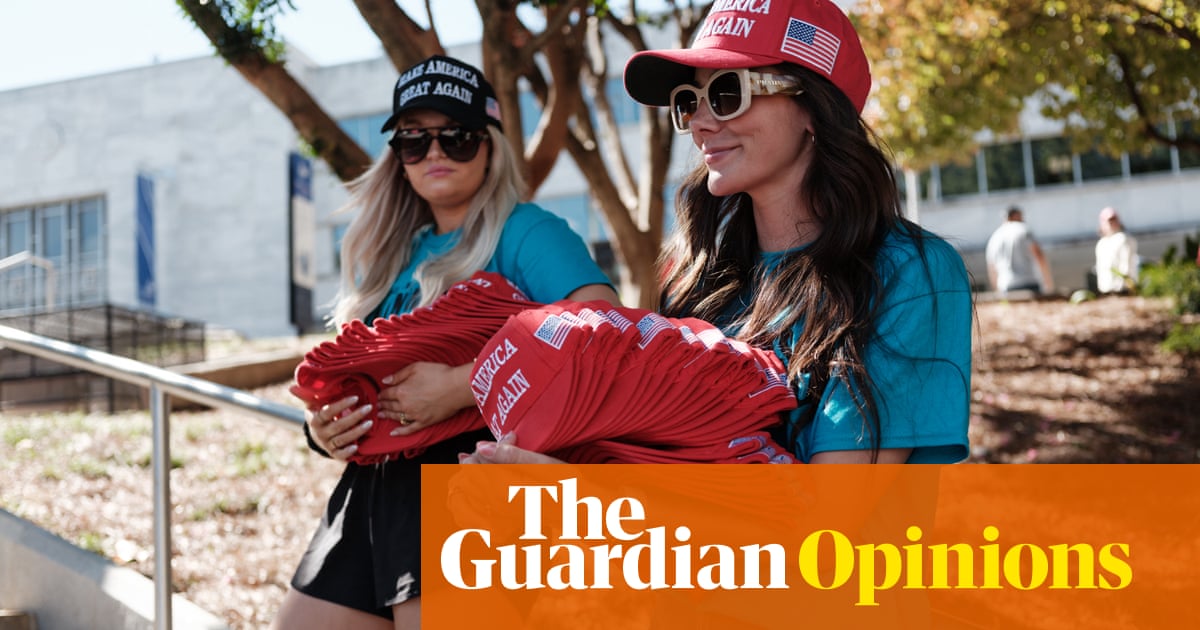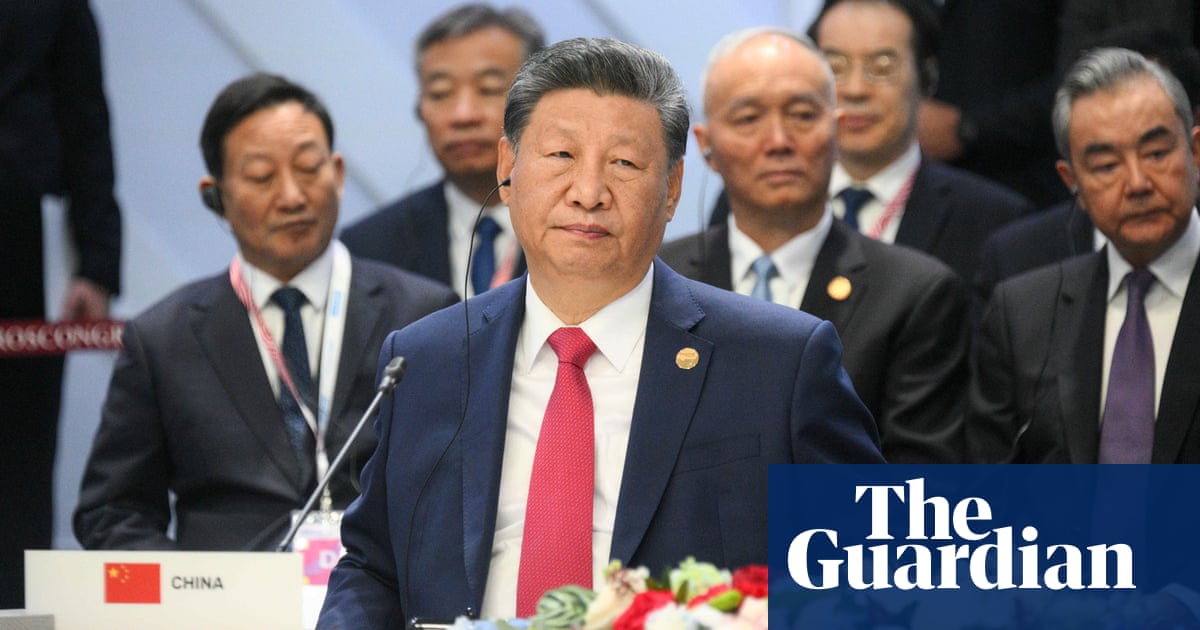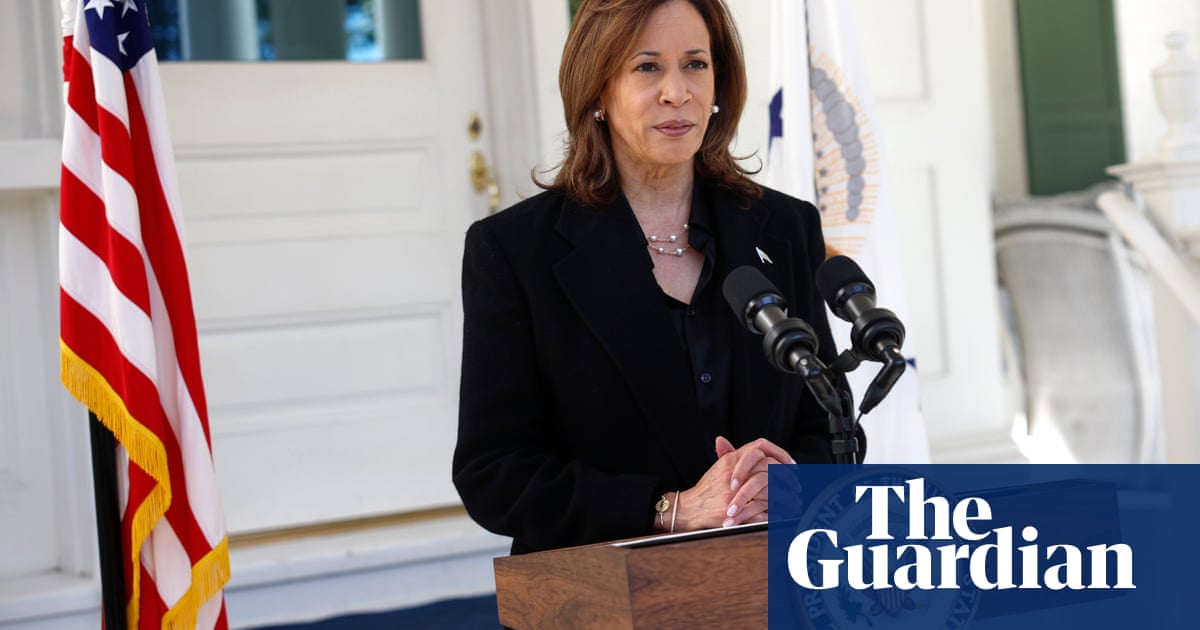This Tuesday, Charlie Kirk brought his You’re Being Brainwashed Tour to the campus of my public university in a Republican-controlled state. It was nothing like the last time Kirk and his Turning Point USA (TPUSA) organization had visited. Although the different timing matters – this was literally two weeks before election day – the differences between the 2018 and 2024 events in many ways reflect the dangerous radicalization of the US right wing.
In 2018, Kirk had a fairly similar agenda when coming to my university: “exposing leftist lies and progressive propaganda” at US universities. I wrote a column about the rather bland event, describing it as a “rightwing safe space”, in which Kirk railed against the “cultural Marxists”. Most students seemed more amused than aggrieved. How different this week’s event was.
When I came to campus early, I saw them set up their stands. I drank my coffee opposite to a lone female student with a Trump hat – a rare sight even at my university. I then went to teach my course on far-right politics, where TPUSA’s event was the talk of the class. I told my students that I totally understood if they wanted to observe the event – who am I to stand in the way of them getting “de-brainwashed”? – and approximately half of my students indeed left halfway through class to attend the event.
After class, I walked down to Tate Plaza, the open space in front of the student center, and was perplexed by the sight. I saw what looked like a sea of Maga hats on the large open space. I bumped into one of my students, who told me that TPUSA handed out the Maga hats for free, and that he was leaving because you couldn’t hear anything anyway. In the background Kirk was droning on about Kamala Harris, wokeism and his other favorite enemies. But there was something to the meeting, an energy that was lacking six years ago. This was not just a safe space, this was a boisterous and proud rally!
Sure, almost anyone wearing their own Maga hat was older and not related to the university, but a couple hundred students happily accepted and wore the hat. Moreover, most kept them on when they left the rally, and went to the food court, to class or even downtown. Turns out that a hat that is the most recognizable symbol of support for a man that has been loudly and openly authoritarian and racist in the last months is a rather cool gimmick for privileged young white men.
There are important broader lessons to be drawn from the differences between these two TPUSA events. First, the 2024 meeting shows the radicalization of conservative America. While Turning Point was already supportive of Trump in 2018, it still had a largely independent program, ostensibly focused on traditional conservative values as small government and capitalism. In the past years, Kirk has not only fully embraced the authoritarian and nativist agenda of Trump, he and his organization have pivoted to full-on Christian nationalism.
Second, Turning Point USA targets college and high school students, that is, those 21 and under. These kids and young adults have been socialized in a world in which 1 Trump is a former president; 2 the Republican party is the party of Trump; and 3 the US Capitol got stormed by Trump sympathizers. For those raised in Republican households, which means most of the students at my university, this means that Trump and the far right are completely normal. What we see as far right, they see as mainstream conservatism. They have no conception of the Republican party of George Bush Sr or Jr.
Third, radicalized organizations like TPUSA have overtaken the role of mainstream conservative organizations such as the College Republicans, not just on campus but also as training grounds for the next “conservative” elite. Kirk has literally been training the cadres for the next Trump administration, should it happen. This is a very different kind of “Republican”, if they are Republicans at all. They are more assertive and extremist but less tied to traditional conservative organizations, including the Republican party.
Fourth, and most optimistically, the sea of Maga hats also gave me a shimmer of hope for the upcoming election. Since Trump’s shock 2016 win, the media has obsessed about “shy Trump supporters”, that is, people who support Trump in the elections but do not say so in polls because of social desirability. Although empirical evidence has always been weak, the “shy Trump voter” never disappeared from the public debate. Seeing these students wear the Maga hats, not for fun or provocation, but as a “normal” expression of support for the “conservative” candidate in the presidential election, confirmed my suspicion that there are no “shy Trumpers” left in 2024.
And, if this is true, there might still be hope, in the sense that the current polls are overrepresenting the Trump vote, because they are overcompensating for a dated phenomenon, the shy Trump voter, yet another victim of the normalization of Trump.
-
Cas Mudde is the Stanley Wade Shelton UGAF professor of international affairs at the University of Georgia, and author of The Far Right Today









